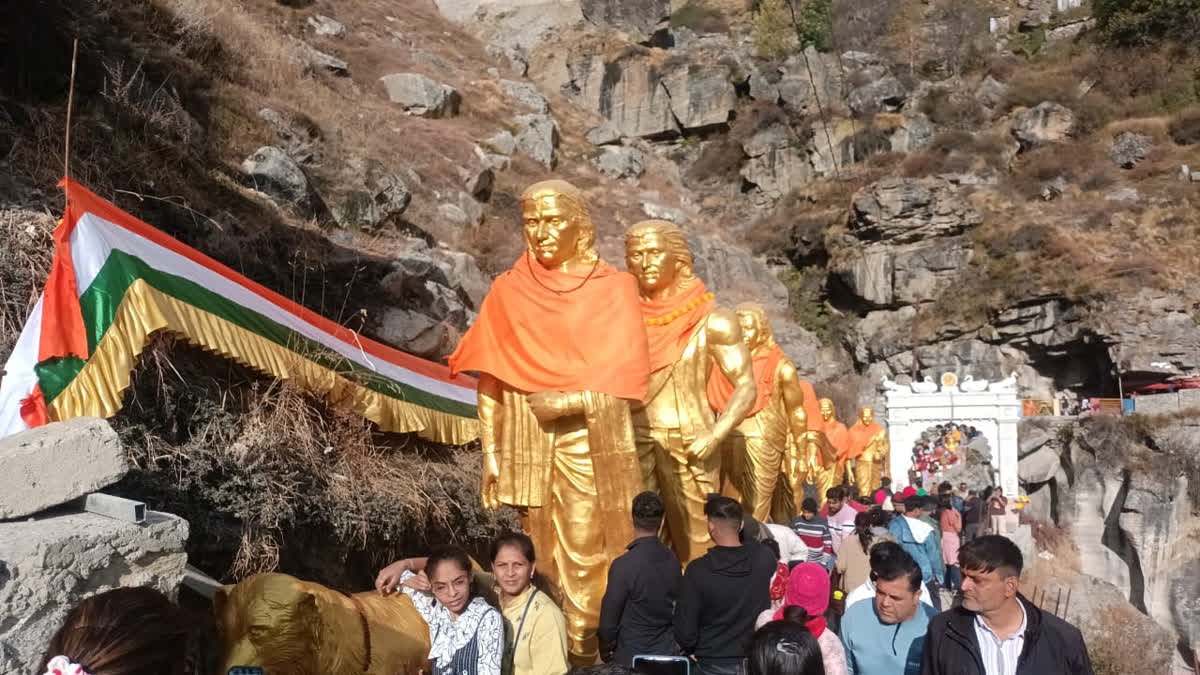Chamoli (Uttarakhand): Nestled in the heart of the Himalayas, in the Chamoli district of Uttarakhand, lies Mana, India’s northernmost village perched at 3,200 meters. The village isn’t just a place; it’s a feeling—a place where the air is rented with stories and silence holds a thousand whispers. Known as the first village of India, the natural beauty-endowed Mana is home to the Bhotiya community and has lived in quiet dignity, but wrapped in layers of mythology. Now, the village has a new allure—a set of monumental statues of the Pandavas, casting a spell on everyone who visits.
Mana’s mystical charm has grown by the recent installation of life-sized statues of the five Pandavas, crafted with care and skill. These statues have become emblematic of Mana village, drawing tourists who are captivated by both the spiritual significance and the artistry of the sculptures. Each of the Pandavas is immortalized in metal, along with the faithful dog who, according to legend, journeyed with Yudhishthira to the gates of heaven.
The Pandavas’ Journey Cast in Metal
According to Hindu mythology, it was from this very village that the Pandavas began their final ascent to Swarg (heaven). The Mahabharata describes their journey up the Himalayas in search of liberation. Draupadi, Nakul, Sahadev, Arjun, and Bhima all met their ends along the way, leaving Yudhishthira and his loyal dog to complete the celestial journey, reaching heaven in their earthly forms. The newly installed statues bring that story to life. Crafted from a mix of metals and weighing around 13 quintals each, these sculptures have added a new dimension to the Mana landscape.
A New Era of Tourism
Mana, often overlooked as simply a stopover on the way to Badrinath, is now attracting visitors who come specifically to marvel at the statues. Since the statues’ installation, there has been surge in tourist footfall, not just from the usual Badrinath-bound pilgrims but from nearby towns like Joshimath and Peepalkothi as well. Local villagers share stories of how the statues have increased curiosity among the visitors and given economic benefits to the locals.
Pitambar Molfa, the village head, says that Mana owes this transformation to Dr. Vishwanath Karad, the founder of MIT Pune, who funded and envisioned the statues. "After establishing a Saraswati temple on the riverbank in 2021, Dr. Karad fulfilled his promise to add these towering monuments of the Pandavas, forever intertwining Mana’s physical space with the spiritual journey of the ancient epic," he informed.
A Path to Heaven
